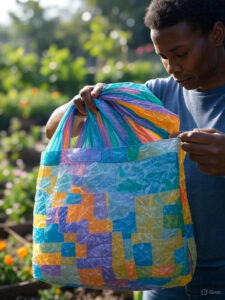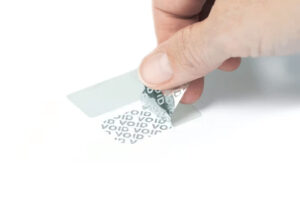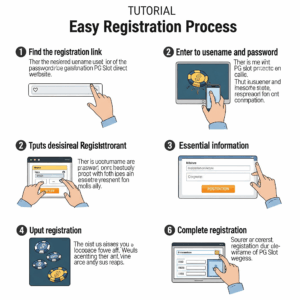Plastic bags are everywhere — from grocery stores to packaging and deliveries. While their convenience is undeniable, their environmental impact is a growing concern. These bags can take hundreds of years to decompose, pollute oceans, harm wildlife, and contribute to climate change. The good news? We can reduce this harm by reusing plastic bags creatively and sustainably.
Reusing plastic bags isn’t just about cutting waste — it’s about making small, smart lifestyle changes that collectively lead to a healthier planet. And the best part? You don’t need to be a DIY expert or eco-warrior to start. With a little creativity, these bags can be transformed into useful, even beautiful, items for everyday use.
“Sustainability begins at home — one reused plastic bag at a time.”
Why Reuse Matters
Each year, the world uses an estimated five trillion plastic bags. Most are used only once and discarded. By reusing them, we reduce the demand for new plastic production and help minimize pollution in our landfills and waterways.
Reusing plastic bags also teaches us to value resources rather than treating them as disposable. This simple habit can be the starting point of a broader eco-conscious lifestyle.
Creative and Sustainable Ways to Reuse Plastic Bags

Reuse Plastic Bags
Here are some practical and imaginative ways to give plastic bags a second life while reducing your environmental footprint:
1. DIY Plastic Bag Yarn (Plarn)
Turn old plastic bags into a material called “plarn” (plastic yarn). Cut the bags into strips and loop them together to make a strong, flexible cord. Plarn can be crocheted or knitted into durable items like:
-
Tote bags
-
Coasters
-
Rugs
-
Baskets
This is a fun project for craft lovers and a great way to upcycle bags into something functional.
2. Trash Can Liners
Plastic bags are ideal for small trash bins in bathrooms, bedrooms, or cars. Instead of buying new liners, reuse grocery or shopping bags. This simple switch can reduce the amount of plastic you consume monthly.
3. Packing Material
When mailing fragile items or storing breakables, plastic bags can serve as soft, protective stuffing. They’re lightweight, flexible, and a great alternative to bubble wrap or foam.
4. Pet Waste Disposal
If you have pets, you know how often you need bags for cleaning up after them. Reusing plastic grocery bags for this purpose is not only practical but also environmentally friendly, as it reduces the use of new disposable bags.
5. Gardening Solutions
Plastic bags can be surprisingly helpful in the garden. Use them as:
-
Temporary gloves when planting
-
Weed barriers beneath mulch
-
Wrapping for young plant roots
-
Protection for potted plants during heavy rain or frost
They help conserve resources while supporting your green thumb.
6. Plastic Bag Art or Weaving
Artists and hobbyists often use plastic bags to create wall art, reusable mats, or even handbags. Weaving, melting (with caution), or fusing plastic bags can create visually appealing designs that are both eco-friendly and expressive.
7. Organizers and Storage
Stuff several plastic bags into an empty tissue box or container to create a simple dispenser. You can then pull out one bag at a time when needed. Use the bags to store:
-
Shoes during travel
-
Wet clothes or swimsuits
-
Kitchen scraps (for composting)
-
Craft supplies or toys
It’s all about being mindful and finding convenience in reuse.
Table: Creative Uses for Reused Plastic Bags
| Reuse Idea | Purpose | Sustainability Benefit |
|---|---|---|
| Plarn Crafting | Create bags, mats, rugs, baskets | Reduces single-use bag waste and promotes creativity |
| Trash Can Liners | Line small garbage bins | Avoids buying additional plastic liners |
| Packing Material | Cushion fragile items in shipping/storage | Replaces non-biodegradable bubble wrap |
| Pet Waste Disposal | Pick up dog/cat waste during walks | Replaces new poop bags |
| Gardening Uses | Cover plants, hold soil, or prevent weed growth | Reduces garden plastic purchases |
| Art and Weaving Projects | Make wall hangings, decor, or fashion items | Transforms waste into beauty |
| Storage and Organization | Sort shoes, wet clothes, or random household items | Promotes reuse and reduces clutter |
Tips for Safe and Smart Reuse
-
Clean the bags before reuse if they held food or liquids.
-
Avoid melting or ironing plastic without proper safety gear and ventilation.
-
Separate damaged bags that can’t be reused and find local recycling centers that accept them.
-
Educate others — share your reuse habits with friends or online to inspire change.
Rethinking Plastic: From Waste to Resource
Reusing plastic bags isn’t a one-time act; it’s a shift in perspective. Instead of seeing them as trash, we begin to see them as raw material — something useful and adaptable. These little acts of creativity and responsibility add up. Over time, they influence how we consume, how we discard, and how we care for our environment.
While reducing plastic use altogether should still be a long-term goal, reusing what we already have is an essential step forward. It’s accessible, cost-effective, and impactful.
Final Thoughts
Plastic pollution won’t disappear overnight, but your habits can make a real difference. Reusing plastic bags creatively and sustainably is a smart, responsible choice — one that benefits your home, your wallet, and the planet.
So, next time you reach for a plastic bag, pause. Ask yourself: “How can I reuse this?” You might be surprised by the possibilities that lie in your hands. Read More






